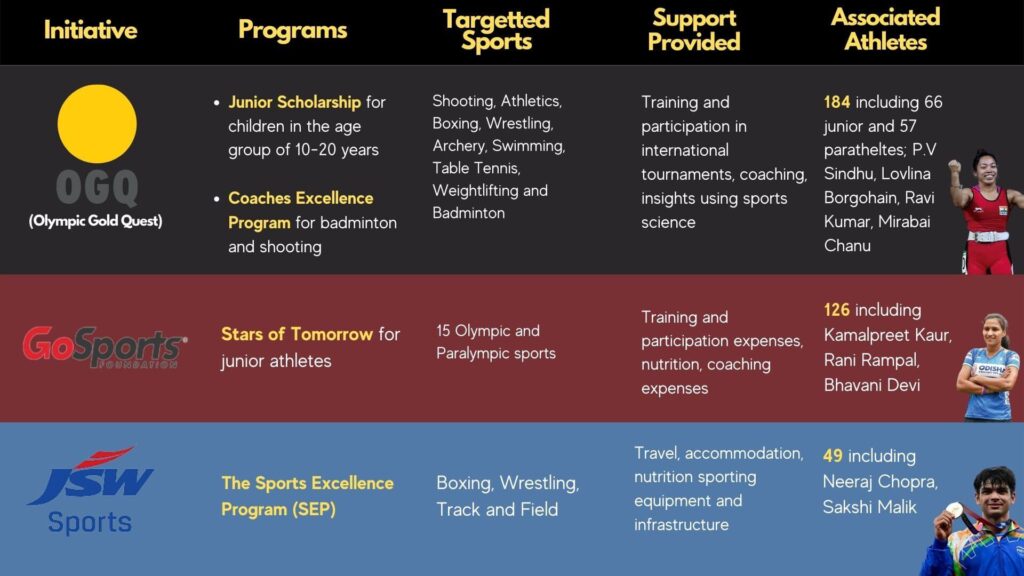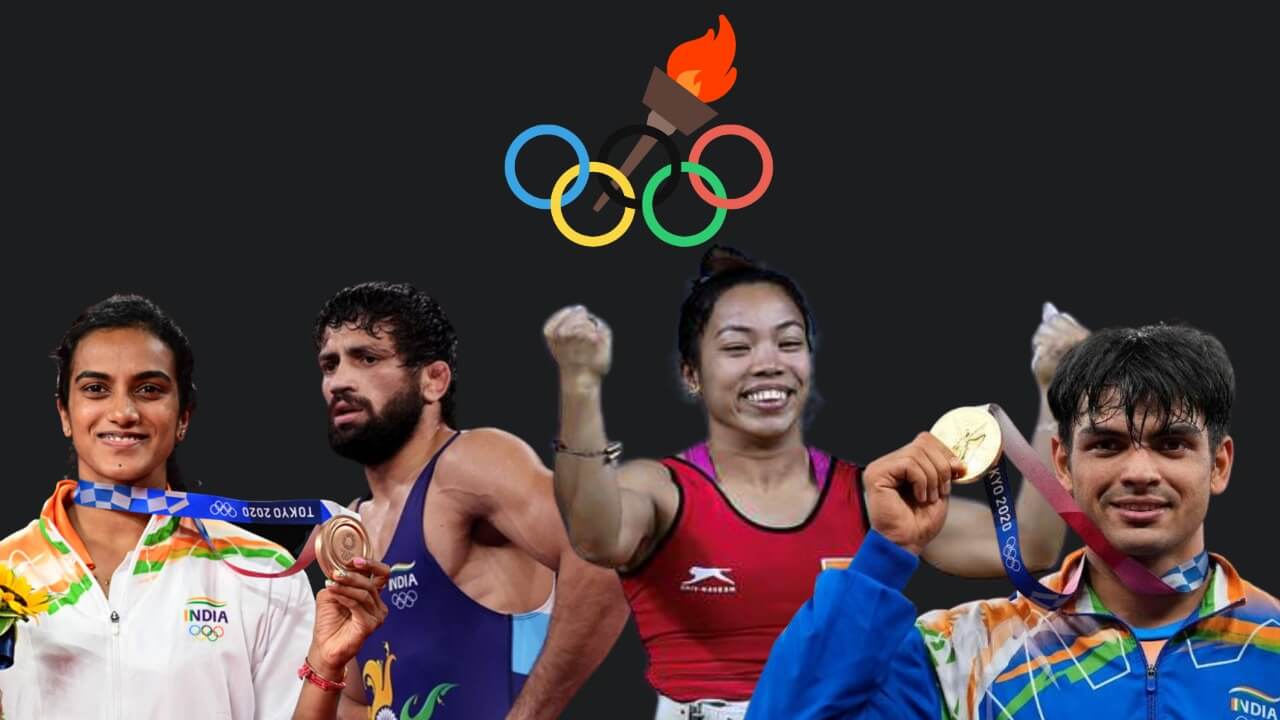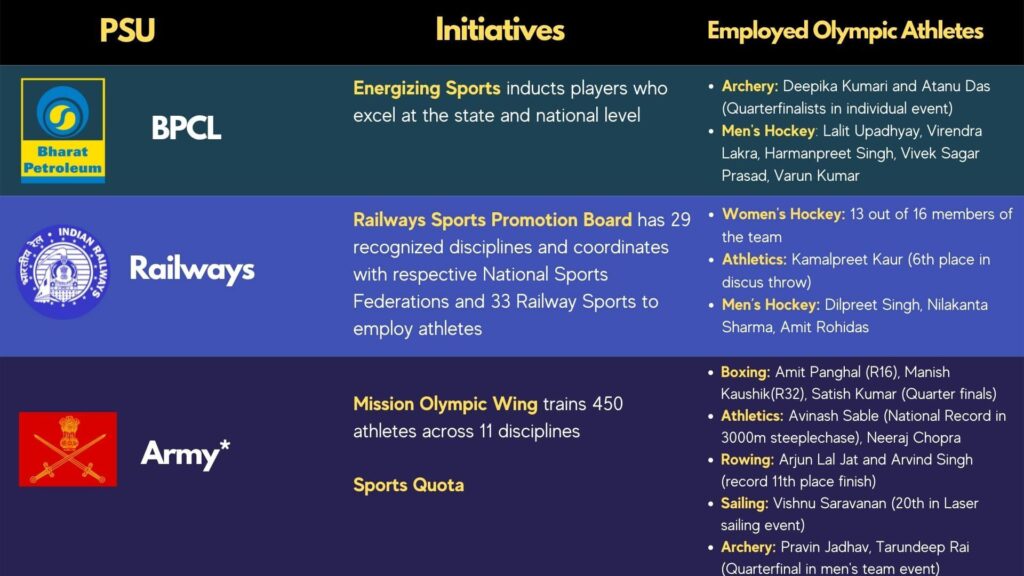During his Independence Day address, Prime Minister Narendra Modi praised India’s Olympic contingent and urged the nation to “give them a big round of applause for their achievements”. This was followed up by a breakfast invite at the PM’s residence, which brought much-deserved national attention to athletes who are otherwise sidelined in a cricket-obsessed nation. With sights being set for Paris 2024, a look at the support received by athletes from the past and over the last month says plenty about what the future may hold for India’s latest cohort of Tokyo 2020 Olympians.
Indian Olympians have always been rewarded, but only after winning a medal
An understated fact is that the Indian government rewards each of its medallists with more bonuses than some relatively prosperous countries. For instance, the U.S. Olympic Committee pays a gold medallist USD 40,000 (~₹30 lakh); 2020 Tokyo gold medallist Neeraj Chopra was rewarded with ₹75 lakh by the Indian Olympic Committee. If you include rewards from state governments, Chopra earned nearly 20 times (₹6 crores) as much as his American gold-winning compatriots from his home state of Haryana alone.
Tamil Nadu govt has announced a cash prize of Rs 2 crore for Mariyappan Thangavelu who bagged the silver medal in the men’s high jump event at the Tokyo Paralympics. Chief Minister M.K.Stalin, said, “Let Tamil Nadu’s record journey in the field of sports continue.”
— Sangeetha Kandavel (@sang1983) August 31, 2021
While this may seem like a lot of money, the timing of these rewards is usually retroactive, rather than proactive. As Bisweshwar Nandi (the coach of Gymnast Dipa Karmakar) has been quoted post-Rio, “This is India. You have to first perform [before reaping rewards].” Even Abinav Bindra, India’s only other individual Olympic gold medallist, went on record to state that he spent close to “half a million dollars” of personal wealth on his training and preparation, a figure which is not feasible for most prospective Olympians in India.
Taking Rio 2016 as a reference point, a study showed that the total expenditure on training on 67 athletes participating in Brazil was ₹17.1 crores, allocated from the government’s TOP scheme. In contrast, the combined cash rewards earned by two medallists alone—P.V. Sindhu (₹13 crores) and Sakshi Malik (₹5.6 crores)—eclipsed this amount.
Considering how people’s attention spans are ever-decreasing, this flow of rewards and recognition from brands immediately after a finish on the podium has been criticised as a marketing gimmick by brands to self-promote by latching onto the athlete’s spotlight. Some brands have been forced to revoke all such media content, after P.V. Sindhu’s management firm raised concerns surrounding privacy violations. While the ethics of this marketing tactic warrant a separate debate of its own, one cannot fault Olympic medalists for deserving recognition and awards for their achievement.
Even this system of rewarding medallists post-success does not apply to all Olympians; Sita Sahu, a 15-year-old double-bronze medallist at the 2011 Athens Special Olympics, selling pani puri for a living was a case that created outrage across the country. In a nation where all winners are not treated equally, it begs the question:
What happens to Olympians after the Olympics?
Training and participating in the Olympics itself is expensive and often an entry barrier for many aspirants. Sustainably funding a career is hence one of the biggest challenges for an Olympian. This problem, however, is not unique to India. A survey covering 500 elite athletes across 48 countries showed that 58% of the respondents did not feel financially secure.
Reaching the summit of a sport is both challenging and expensive, but staying at the top is even more demanding, especially given that sport is intrinsically rife with uncertainty. For instance, two of India’s star performers at Rio, Dipa Karmakar (4th in artistic gymnastics) and Sakshi Malik (bronze medallist in wrestling) did not even compete in Tokyo. Dipa withdrew due to injury, and Sakshi was beaten in qualification by her younger compatriot Sonam Malik. It goes to show the window of opportunity that an athlete has to make an impact (and reap those rewards) before injury or newer challengers can affect their playing careers.
With little set in stone for the next edition, let’s take a closer look at how India’s Olympians from Tokyo are securing their short term (as far as the Paris Olympics is concerned) and long term (after their playing careers) sustainability.
Funding for Paris 2024
Government Support
The Target Olympic Podium Scheme (TOPS)
Tokyo silver medallist Mirabai Chanu, who received support worth ₹2.5 crores, and former medallist Saina Nehwal have been vocal in their praise of the scheme which provides a stipend of ₹50,000 per month as well as coaches and training infrastructure to all members of India’s Olympic contingent.
However, athletes are eligible to receive the funding and training facilities only after they confirm qualification for the Olympics, which affected Aditi Ashok, who qualified for the Olympics just 60 days prior to the main event. It has also been criticised by Brij Bhushan Sharan Singh, president of the Wrestling Federation of India (WFI), who stated “They do not do anything at the grassroots and just pick up the big talents. And the athletes that do not qualify, they dump them,” highlighting the abandonment of wrestlers Sakshi Malik and Pooja Dhanda after they failed to qualify for the Olympics. While this outcome for Sakshi and Pooja feels unfair, in the theory of “national selection”, it is indeed a survival of the fittest.
There has been an effort to improve the program by promoting sport at the grassroots level since 2020 by identifying children in the 10-12 age group, with an eye set on the 2028 Olympics.
Odisha’s Success Story
In 2011 the men’s field hockey team received a meagre ₹25,000 per player from Hockey India in recognition of their victory at the Asian Champions Trophy. The paltry sum prompted Gurbaz Singh, a senior player to issue a warning on record that “If such things continue, there will be a day when there will be very few kids interested in playing hockey. They would rather opt for cricket or any other individual sport”.
A lot has changed since then with the Odisha government sponsoring both the men and women’s teams for ₹100 crores in 2018, initially for a contract till 2023. After their impressive performances in Tokyo, where the men bagged bronze and the women finished in fourth, their contract with the Odisha government was extended up to 2031. Odisha has also hosted multiple international hockey tournaments since 2018 and is set to host the Men’s World Cup in 2023, all of which has increased viewership of hockey in the country and brought in broadcasting revenue.
Also Read: O-disha: Showing the Way as a Model State for Adopting Sports
The Odisha government has also supported initiatives to develop sports infrastructure for Paris 2024 with the Targeting Performance Centre at the Kalinga Stadium complex and building new sports complexes in Ganjam and Hinjili.
NGOs and CSR-Partnerships

While the number of athletes and disciplines benefiting from these programs may seem small in comparison to India’s overall talent pool, the inflow of non-governmental investment towards developing junior athletes is promising because it offers resources, expertise, and training infrastructure for athletes even before they qualify for the Olympics, which is when they need to have the most support. “Until 2018, 50% of our funds came from private sponsors, without whom there is no way we would have qualified for Tokyo,” says KC Ganapathy in conversation with The Bastion. The duo of Ganapathy and Varun Thakkar finished 18th overall in the Men’s 49-ers in Tokyo and were commended for qualifying for the event by the Prime Minister at his residence.
CSR investments towards athletes can be a win-win situation for companies, especially if channelled effectively. “Today, if you are a corporate investing in sport, you will definitely get recognized much more than a corporate investing in women’s empowerment or other portfolios because there are thousands of others investing in that area,” reiterates Deepthi Bopaiah, the Executive Director of GoSports Foundation.
Earnings from Tokyo 2020
The IOC had announced an official reward of ₹75 lakh for gold, ₹40 lakh for silver, and ₹25 lakh for bronze medallists in Tokyo. Medallists’ total earnings, however, varied depending on their home state, from anywhere between ₹25 lakhs (in West Bengal) to ₹6 crores (Haryana).
As for those who narrowly missed the podium, Mankind Pharma’s declaration of ₹11 lakh each —to the 16 players of the women’s hockey team, as well as for boxer Satish Kumar, wrestler Deepak Punia, shooter Saurabh Chaudhary and Golfer Aditi Ashok— is an example of corporates rewarding Olympic athletes.
Life After a Playing Career
For most athletes, sports is not just their passion but a livelihood. While very few may earn enough in their careers to cover their future expenses, others need to plan their second innings.
Coaching
Coaching provides athletes with an avenue to remain connected with the sport they have dedicated their lives to, along with a chance to nurture a new generation of talent. “Varun and I would love to give back to the Tamil Nadu Sailing Association, in the same way as many other individuals invested in us when we were young,” says KC Ganapathy. “Especially for a non-mainstream sport like sailing, if athletes don’t give back with their time and knowledge, it will be very difficult for new talent to reach Olympic standards,” he adds. Former Olympians P. Gopichand—who coached Saina Nehwal and P.V. Sindhu to Olympic medals) and Satpal Singh—who coached bronze medallist Yogeshwar Dutt and silver medallist Sushil Kumar—are prime examples of giving back. Recognising this potential, the Sports Authority of India (SAI) has announced a pathway for current Olympians and Paralympians to become coaches at its various National Centers of Excellence, in a move that makes coaching a more lucrative post-retirement option.
Olympians are perceived as a mark above the rest, at least as far as national athletes go. Their involvement in honing India’s sporting potential has diversified beyond coaching. This is the case with Viren Rasquinha, the Men’s Hockey captain at the Athens Games, who is now the Director and CEO of the non-for-profit Olympic Gold Quest program.
The Private Sector
While most of the money put into sports is channelled through companies’ CSR programs, several companies support athletes directly, especially after they have participated in the Olympics. In August, Pine Labs promised to offer jobs to former Olympic and Asian Games medallists.
We will recruit, train & employ, every year, at least 3 past Asian games athletes/Olympians. As sports person retire & look to build a second innings, they deserve an opportunity in emerging sectors. Sometimes this is tough and @PineLabs will do our best to give them new avenues
— Amrish Rau (@amrishrau) August 1, 2021
Offering contracts to athletes is not entirely new for large companies as they bring a valuable set of qualities in management, operations, and leadership capacities. Startups are playing their part by investing in developing athletes’ skill sets in their post-playing careers. “Sportspersons and athletes spend years honing their skills and don’t find time to learn technical skills. Some athletes drop out early as they are unsure of their post-sports career. We want to provide a safe landing and encourage athletes to pursue their dreams longer,” tweeted Amrish Raju, the founder and CEO of Pine Labs.
The Public Sector
Public Sector Units (PSUs) not only provide a stable income and job security which allows athletes to focus on training, but it also provides benefits like pensions and insurance which help to secure the long term future after sports. Here is a non-exhaustive list of PSU employers and their associated athletes.
It goes to show that although most of India’s Olympians do not win a medal and the significant rewards that accompany it, PSUs and the Indian Army have offered stable avenues for sustaining their playing and post-playing careers.
Athlete’s Resources Decide India’s Future at the Olympics
“Every four years, we [as a country] wonder why we don’t have more Olympic medallists,” Deepthi says, reminding us that “the fact is that if you want [medals] to happen, there need to be investments over an eight to ten year period at least. Today, India is a multi-sport nation because there have been investments by different stakeholders”.
The Odisha government’s investment in Indian Hockey has not only benefited the sport but also cemented Naveen Patnaik’s legacy for years to come. It goes to show that backing athletes can create goodwill amongst Indians. Even corporate brands can gain goodwill by associating themselves with athletes early on. “Very few companies are specifically investing in sport, and they can be seen as the ones changing the narrative around an athlete, or a particular sport,” adds Deepthi.
If goodwill does little to convince private investors, monetary returns certainly do the trick, especially with Paris 2024 only three years away. For example, JSW Sports, which have been managing Neeraj Chopra’s endorsement portfolio since 2015, have seen his endorsement value rise by almost 10 times (from ₹20-30 lakhs to ₹2.5 crores) after his Olympic triumph. An interesting study on the spending per Olympic medal in each discipline across Japan, the US, and the UK discusses how some sports are in fact more cost-efficient in terms of “producing” a medal, although a detailed discussion on the same warrants an article of its own.
The NDA government’s sensitivity to invite and interact with all Olympians, and not just medal winners, has raised hopes of a more inclusive and proactive approach to supporting athletes in preparation for Paris 2024. The authenticity of said recognition will be seen only once the fervour of Tokyo dies down in a couple of months. India’s Olympic and Paralympic performances at Tokyo 2020 have laid a strong platform for Paris 2024. The monetary and in-kind rewards offered to the current set of Olympians must translate into supporting them towards 2024, along with creating a sustainable pool of talent for future editions of the Games. Only then will India shed its image of rewarding Olympic winners for funding one that invests in the journey of its future world-beaters.







